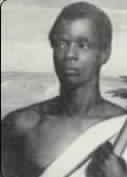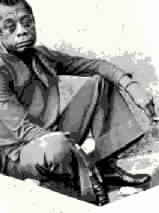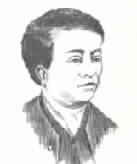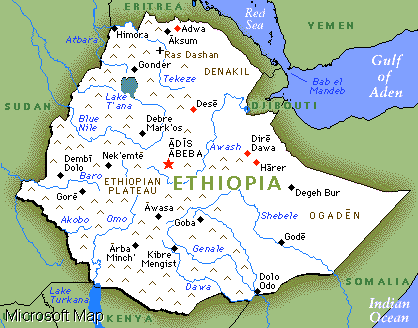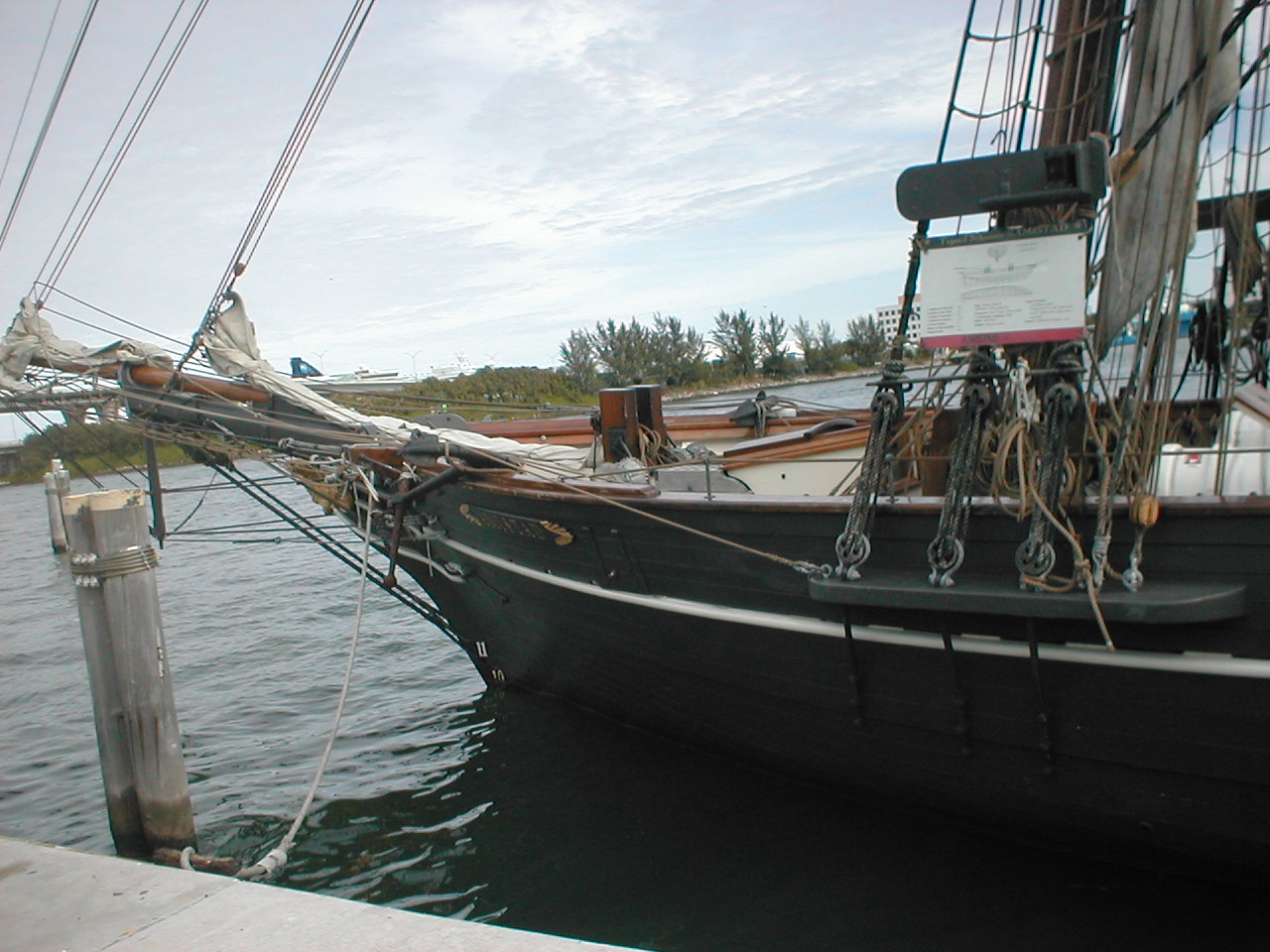During the 1st millennium BC, Semitic people from Saba' (Hebrew Sheba) crossed the Red Sea and conquered the Hamite on the coast of what was eventually to become the Ethiopian Empire. By the 2nd century AD the victors had established the kingdom of Aksum. The kingdom was ruled by the Solomonid dynasty, so called because the kings claimed direct descent from the biblical king Solomon and the queen of Sheba. Aksum converted to Christianity, belonging to the same tradition as the Coptic Christians of Egypt. It flourished for a while, but beginning in about the 7th century the kingdom declined as the Solomonids lost control of section after section of their realm. Early in the 10th century the Solomonid dynasty was overthrown and replaced by the Zagwe dynasty, the ruling family of a region on the central plateau known as Lasta. Regaining control of the country around or after 1260, the Solomonids gradually succeeded in reasserting their authority over much of Ethiopia, although Muslims retained control of the coastal area and the southeast. During the reign (1434-1468) of Zara Yakub, the administration of the Ethiopian church, which had become divided by factionalism, was reformed, and religious doctrines were codified. At about this time a political system emerged that lasted until the middle of the 20th century. It was characterized by absolutist monarchs who exacted military service in return for grants of land.
European Influence
When Muslims from Harer invaded Ethiopia beginning about 1527, the emperor, as the ruler was now called, asked the Portuguese for assistance, and with their help the Ethiopians defeated the Muslims in 1542. In 1557, Jesuit missionaries arrived, but their ongoing attempts to convert the Ethiopian emperors from Coptic Christianity to Roman Catholicism were largely unsuccessful, and provoked social and political unrest in those who felt the Coptic Church was the backbone of an independent Ethiopian culture. In 1632, following a period of turbulence and dynastic confusion, Fasiladas became emperor. He was succeeded by his son, Johannes I, in 1637. During the 17th century the country experienced an artistic renaissance for Ethiopian culture, as it was exposed to styles of expression from western Europe and the Muslim world. This was especially true during the reign of Johannes' son, Iyasus I, also known as Iyasus the Great. After succeeding to the crown in 1682, Iyasus became known as a lover of the arts, as well as a modernizer and brilliant military tactician. His reign saw the construction of some of Ethiopia's most beautiful religious architecture as well as the re-establishment of governmental authority over several provinces in the south that had succumbed to Muslim and tribal encroachment. After the death of Iyasus in 1706, Ethiopia entered another prolonged period of dynastic confusion and decline, during which the country fractured into separate regions.
The only unifying force that remained throughout this period was the Ethiopian church. Gaining the support of high church officials, a successful brigand from the northwestern frontier, Ras Kassa, had himself crowned Emperor Theodore II in 1855, after having defeated a number of petty feudal rulers who controlled various sections of the country. Later, when Theodore imprisoned some British officials for conspiring against him, the British dispatched an expeditionary force to Ethiopia, and the emperor committed suicide in 1868 rather than be taken prisoner. After a four-year struggle for the throne by various claimants, Dejaz Kassai, governor of the province of Tigre, succeeded, with British aid, in being crowned Johannes IV, emperor of Ethiopia.
In the 1870s the main external enemy of the empire, which was little more than a collection of semi-independent states, was Egypt. In 1875 the Egyptian khedive Ismail Pasha extended Egyptian protection to the Muslim ruler of Harer and launched an attack on Ethiopia from both the north and the east. John IV successfully halted the Egyptian invasion, but the continued occupation by Egypt of the Red Sea and Somali ports severely curtailed the supply of arms and other goods to Ethiopia. Johannes was killed defending his western frontier against the Sudanese in 1889. He was succeeded by Menelik II, who established a new capital at Aděs Abeba and succeeded in uniting the provinces of Tigre and Amhara with Shoa.
The Italo-Ethiopian Wars
With the opening of the Suez Canal in 1869, the Red Sea coast had become increasingly attractive to the European powers as an object for colonization. Italy focused its attention on Ethiopia, seizing Assab in 1872 and Massawa in 1885. In 1889 Menelik and the Italians signed the Treaty of Wichale (Ucciali). The treaty was one of friendship and cooperation, but the Amharic and Italian versions of it differed, and the Italians claimed that it made all of Ethiopia their protectorate. As a result, war broke out between Italy and Ethiopia in 1895, and Italian forces were decisively defeated at Adwa (Aduwa) the following year. Italy was forced to recognize the independence of Ethiopia, and Menelik's present-day boundaries. The successor of Menelik, Emperor Lij Iyasu (reigned 1913-1916), was deposed in favor of his aunt, crowned Empress Zauditu. Tafari Makonnen, her cousin, was selected as heir apparent; he succeeded to the throne as Haile Selassie I. In 1931 he granted Ethiopia its first constitution.
With the rise of the dictator Benito Mussolini, Italian designs toward Ethiopia were revived, and in October 1935 Italy invaded the country (see Italy: The Ethiopian Campaign). An attempt by the League of Nations to halt the conquest failed. Aděs Abeba fell to the invaders, and in May 1936 Mussolini proclaimed Italy's King Victor Emmanuel III emperor of Ethiopia. Haile Selassie was forced to flee the country and take refuge in England, but he was restored to the throne by British and Ethiopian forces in 1941.
The Later Reign of Haile Selassie
According to the terms of the Allied peace treaty with Italy, signed in 1947, agreement was to be reached within a year on the disposition of the former Italian colonies of Eritrea, Italian Somaliland, and Libya. In the absence of such an agreement, however, the decision was left to the United Nations (UN). The UN General Assembly voted for the federation of Eritrea with Ethiopia, to be completed by September 1952.
In 1955 Haile Selassie issued a revised constitution, which was a half-hearted attempt to move the country into the 20th century. For example, it gave certain limited powers to the Parliament. Progressive elements in the country, however, felt it was insufficient. After an unsuccessful attempt by members of the imperial guard to overthrow Haile Selassie in December 1960, the emperor increased government efforts toward economic development and social reform.
As the 1960s progressed, Haile Selassie became increasingly preoccupied with foreign affairs. In 1963 he played a leading role in the formation of the Organization of African Unity, which located its secretariat at Aděs Abeba. During the following year a long-standing border dispute between Ethiopia and the Somali Republic erupted into armed warfare. A truce, agreed to in March, established a demilitarized zone along the border, but hostilities recurred sporadically. Trouble also arose in 1965 with Sudan, which Ethiopia accused of abetting an Eritrean independence movement. The conflict intensified when 7000 Eritreans fled to Sudan in 1967 because of Ethiopian military reprisals against the secessionists. In December 1970 the government declared a state of siege in parts of Eritrea. The move failed, however, to end the guerrilla warfare.
In the early 1970s Haile Selassie continued to play a major role in international affairs, helping to mediate disputes between Senegal and Guinea, Tanzania and Uganda, and northern and southern Sudan. Nevertheless, he largely ignored urgent domestic problems: the great inequality in the distribution of wealth, rural underdevelopment, corruption in government, rampant inflation, unemployment, and a severe drought in the north from 1972 to 1975.
The Mengistu Regime
In February 1974 students, workers, and soldiers began a series of strikes and demonstrations that culminated on September 12, 1974, with the deposition of Haile Selassie by members of the armed forces. A group called the Provisional Military Administrative Council, or the Dirgue, was established to run the country, and in late 1974 it issued a program calling for the establishment of a state-controlled socialist economy. In early 1975 all agricultural land was nationalized, and much of it was soon parceled out in small plots to individuals. In March 1975 the monarchy was abolished, and Ethiopia became a republic.
During 1976 and 1977 Lieutenant Colonel Mengistu Haile Mariam emerged as the country's chief political figure; his position was consolidated in early 1977 when several top leaders of the Dirgue were killed, reportedly on his orders. In addition, during the period from 1976 to 1978, known as the Red Terror, the government carried out a campaign to crush opposition in which up to 100,000 people were reported dead or missing. But Mengistu's regime continued to be strongly opposed by students, by several political factions, and by two secessionist movements-in the Ogaden region of southwestern Ethiopia and in Eritrea. In the Ogaden, Somali-speaking inhabitants sought to unite the largely barren region with adjacent Somalia. The long-standing conflict escalated in mid-1977, and, with considerable help from Somalia, the secessionists soon won control of most of the Ogaden. The Ethiopian government subsequently received large-scale military aid (including troops from Cuba and advisers from the USSR), which enabled it to make gains against the rebels, but resistance to its authority continued. Meanwhile, a government program to reduce poverty and boost economic growth was stalled by recurrent drought and consequent famine. In September 1984, Ethiopia became a Communist state, with Mengistu as secretary-general of the newly established Workers party. The nation changed its name to the People's Democratic Republic of Ethiopia in 1987, under a new constitution that ostensibly established a civilian government; the national legislature elected Mengistu president. The protracted civil war and the government's mistrust of Westerners hampered worldwide efforts to provide food and medical aid to the beleaguered country throughout the 1980s.
As the 1990s began, a drastic cutback in Soviet aid left Mengistu's government vulnerable. Two allied rebel movements, the Ethiopian People's Revolutionary Democratic Front (EPRDF), based in Tigre, and the separatist Eritrean People's Liberation Front (EPLF) gained control of the northern provinces in 1990. In May 1991, Mengistu fled to Zimbabwe; more than 14,000 Ethiopian Jews, or Falashas, were airlifted out of Aděs Abeba by Israel just before the rebel forces entered the city. The EPRDF, led by Meles Zenawi, set up a national transitional government. The EPLF established a provisional government in Eritrea. After voters approved secession in 1993, Eritrea declared its independence, and Ethiopia recognized the new government.
In 1994 Ethiopian voters elected representatives for the Constituent Assembly, which was charged with writing a new democratic constitution. The EPRDF won 484 out of 547 seats and established a constitution, that grants special rights to different ethnic groups in the country. Also in 1994 Ethiopian courts began to try members of Mengistu's regime for crimes against humanity. Twenty-three individuals, including Mengistu himself, were tried in absentia.
